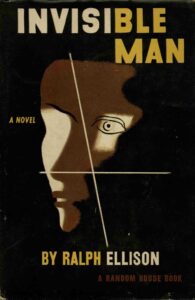Tag: Eric Bennett Associate Professor of English
American Must-Reads: On Photography
by The Cowl Editor on September 13, 2018
Arts & Entertainment
by: Dr. Eric Bennett Associate Professor of English
Life is too short to read everything. It may even be too short to major in American Studies. This column, brought to you by professors in AMS, highlights the books you simply cannot let pass, whatever your major. Start your list!
 Susan Sontag’s On Photography (1977) is required reading for virtually anybody in art school. But chances are good that you are not an art major, and PC is not RISD, so why should you care?
Susan Sontag’s On Photography (1977) is required reading for virtually anybody in art school. But chances are good that you are not an art major, and PC is not RISD, so why should you care?
For starters, you will snap more pictures in a year than your grandparents took in their lifetimes. And your Instagram feed comprises just a fraction of the images that shape your reality each day. The profusion may seem like a new thing. But Sontag heralded this state of affairs long before the advent of smartphones.
A major consequence of our photographic thralldom, according to her, is that everything gets flattened. “Crushed hopes, youth antics, colonial wars, and winter sports are all alike,” Sontag writes, “—are equalized by the camera.”
She also observes that we stop feeling real as soon as we step beyond the camera’s gaze, “Ultimately, having an experience becomes identical with taking a photograph of it, and participating in a public event comes more and more to be equivalent to looking at it in photographed form.”
Sontag recognizes photography’s great democratizing power. Anybody can capture anything now. But she fears the anxiety, the numbness, and the hollow lust it engenders.
Sontag’s observations, dark and light, accumulate in terse, epigrammatic brilliance. She offers as much a picture of America as a theory of picture-taking. “The freedom to consume a plurality of images and good,” she warns, “is equated with freedom itself. The narrowing of free political choice to free economic consumption requires the unlimited production and consumption of images.” Think about it—who is the weirdest friend? The socialist? The far right conservative? Or the centrist with a flip phone?
The chapters mingle homage to a miraculous art form with dire warnings that are increasingly relevant for this century.
American Must-Reads: Invisible Man
by The Cowl Editor on August 30, 2018
Arts & Entertainment
by Dr. Eric Bennett
Associate Professor of English
Life is too short to read everything. It may even be too short to major in American Studies. This column, brought to you by professors in AMS, highlights the books you simply cannot let pass, whatever your major. Start your list!

Ralph Ellison’s mid-twentieth-century masterpiece, Invisible Man, rides the harrowing logic of a nightmare. Each weird scene careens into the next with feverish inevitability. A dozen black teenagers pummel each other before a crowd of cheering white businessmen. A sharecropper rationalizes unspeakable acts. Elite powerbrokers torture the downtrodden with false promises. Yams go bad in the mouth. Street protests metastasize into psychedelic riots. A paint factory explodes.
Yet everything unfolds in the waking reality of a simple story. A nameless hero is expelled from his college in the south. He moves to New York, finds common cause with communists, loses faith in that creed, and vanishes underground. Through this most basic “kid leaving home” plot, Ellison captures in riveting detail the ill electricity of Jim Crow America.
In 1952, when Invisible Man first appeared, the world was still reeling from World War II and the genocidal racism that had permeated its driving ideologies. Many Americans believed that an account of a single life could stand in for all lives—could underscore our common struggles and downplay our incidental differences.
Mastering that vision, Ellison dramatized not only painful truths about African American history, but also the colorblind terrors and perplexities of modern existence.
It is all too easy to feel what his hero feels: at once powerless, stultified, and defiant as vast systems, hidden currents, pervasive norms, and random accidents tangle inextricably with the behavior of those around us and confuse our most intimate self-conceptions. “Who knows,” the narrator concludes, “but that, on the lower frequencies, I speak for you?”
